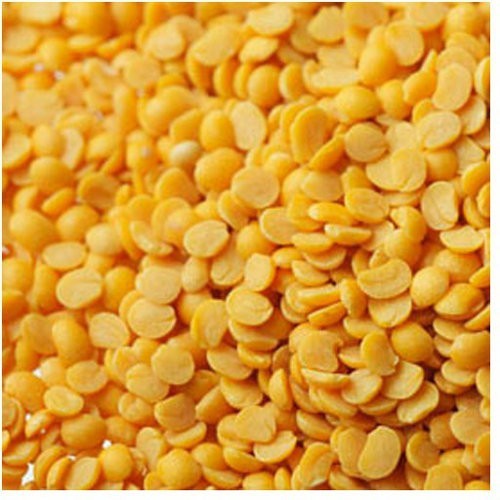In response to yesterday’s column a reader on the social media concluded that it is obvious that farmers should grow tur dal which is priced at Rs 200 per kg, in comparison to sugar which is selling at a much lower price. He further said that businesses which tend to enjoy pricing power tend to do well.
Only if it were as simple as that. This is the classic, interest rate cut will lead to increased consumption, kind of economic theory—it doesn’t always work. In fact, in order to encourage farmers to plant more dal (pulses) the government in early November announced a significant increase in the minimum support price of gram and masur dal.
The minimum support price of gram was increased by Rs 250 to Rs 3425 per quintal (i.e. 100 kgs). The minimum support price of masur was increased by Rs 250 to Rs 3325 per quintal. Over and above this, a bonus of Rs 75 per quintal has also been announced.
Does this increase in minimum support price and a bonus to top it, mean that farmers will now automatically plant more dal in the rabi season, which is currently on. The government clearly thinks so. As the press release announcing the increase in minimum support prices (MSPs) pointed out: “The higher MSPs would increase investment and production through assured remunerative prices to farmers.”
In a world of lower interest rates leading to increased consumption kind of economics, this would have made perfect sense. The trouble is do farmers know about the government offering a minimum support price on dal? The Commission for Agricultural Costs and Prices (CACP), a part of the ministry of agriculture, suggests otherwise.
As the report titled Price Policy for Kharif Crops—The Marketing Season of 2015-2016 points out: “Two most important procurement agencies of the Government of India namely Food Corporation of India (FCI) and National Agricultural Cooperative Marketing Federation of India Limited (Nafed) were set up with the main objectives of procuring notified commodities at MSP, if and when the market prices go below MSP. These agencies have been in the existence for over 50 years and 30 years respectively. Yet, the benefits of MSP bypass a large section of farmers, rendering the pricing policy and procurement operations ineffective. As per Situation Assessment Survey (NSS 70th Round), only 2.57 million households were benefitted directly from procurement of paddy during 2012. The procurement of oilseeds and pulses is far worse.”
So the question is do the farmers know about these price signals being sent out by the government? And the answer is no. In fact, as can be seen from the accompanying table in 2014-2015, the Nafed barely picked up any tur, moong or urad dal.
Table: Procurement of Pulses by Nafed.
 Nafed picked up 1543 tonnes of tur dal in 2014-2015. The total production of tur dal in 2014-2015 was around 2.78 million tonnes. The total production in 2013-2014 had stood at 3.34 million tonnes. What this tells us is that unlike rice and wheat, the government agencies are picking up very little of dal directly from the farmers at the minimum support price.
Nafed picked up 1543 tonnes of tur dal in 2014-2015. The total production of tur dal in 2014-2015 was around 2.78 million tonnes. The total production in 2013-2014 had stood at 3.34 million tonnes. What this tells us is that unlike rice and wheat, the government agencies are picking up very little of dal directly from the farmers at the minimum support price.
The fact that the government picks up rice and wheat and does not pick up dal has distorted the entire production process of dal. What does not help is that the average farmer has faced losses.
As a recent news-report in The Economic Times points out: “According to an analysis done by the scientists of the Mahatma Phule Krishi Vidyapeeth (Agricultural University), Rahuri, farmers who grew tur in 2014, suffered losses of 12.7 per cent.”
The news-report then goes on to suggest that most farmers had to sell the tur dal they had produced at below MSP in 2013 and 2012. And this explains why the production of tur dal fell from 3.34 million tonnes in 2013-2014 to 2.78 million tonnes in 2014-2015. What this also tells us is that high prices are not leading to increased gains for farmers, and it is the middle men who are gaining the most.
Imports are not a solution because the global market for dal is very thin. As the report titled Price Policy for Rabi Crops—The Marketing Season of 2016-2017 points out: “As per Food and Agricultural Organization (FAO), the total global production of pulses was 72.3 million tonnes in 2013, out of which about 19% is traded. India is the largest producer of pulses in the world with a share of 24.3 percent…India is the largest importer with a share of 27.3%.”
In fact, India’s import of pulses has gone up dramatically from 13.4 lakh tonnes in 2004-2005 to around 45.7 lakh tonnes in 2014-2015. Further any more jumps in imports will only lead to an increase in prices of dal. So what is the way out?
The farmers first and foremost need to be aware that there is something known as a minimum support price. As the report titled Price Policy for Kharif Crops—The Marketing Season of 2015-2016 points out: “This calls for giving wide publicity about MSP and procurement agencies on radios, television and vernacular languages in popular local dailies, at least 15 days before the start of procurement operations so as to reach farmers far and wide.”
Second, given that state agencies are procuring rice and wheat, they need to procure dal as well, in order to balance things out. As the report titled Price Policy for Kharif Crops—The Marketing Season of 2015-2016 points out: “A pertinent question arises as to why farmers are not wholeheartedly diversifying towards oilseeds and pulses. Based on CACP’s interaction with a wide spectrum of farmers and also based on field visits, it emerged that farmers need a backup plan in the form of reasonably strong procurement machinery to be put in place to fall back upon when the prices fall below minimum support price.”
As the press release announcing an increase in the minimum support price of Rabi crops pointed out: “The Cabinet also directed that in order to strengthen the procurement mechanism for pulses and oilseeds, Food Corporation of India (FCI) will be the Central Nodal Agency for procurement of pulses and oilseeds.”
Let’s see how much impact this move has. In an ideal world, the market should do its own thing, but in this case government intervention seems to be the best way out, at least in the short-term.
(The column originally appeared on The Daily Reckoning on Dec 1, 2015)

